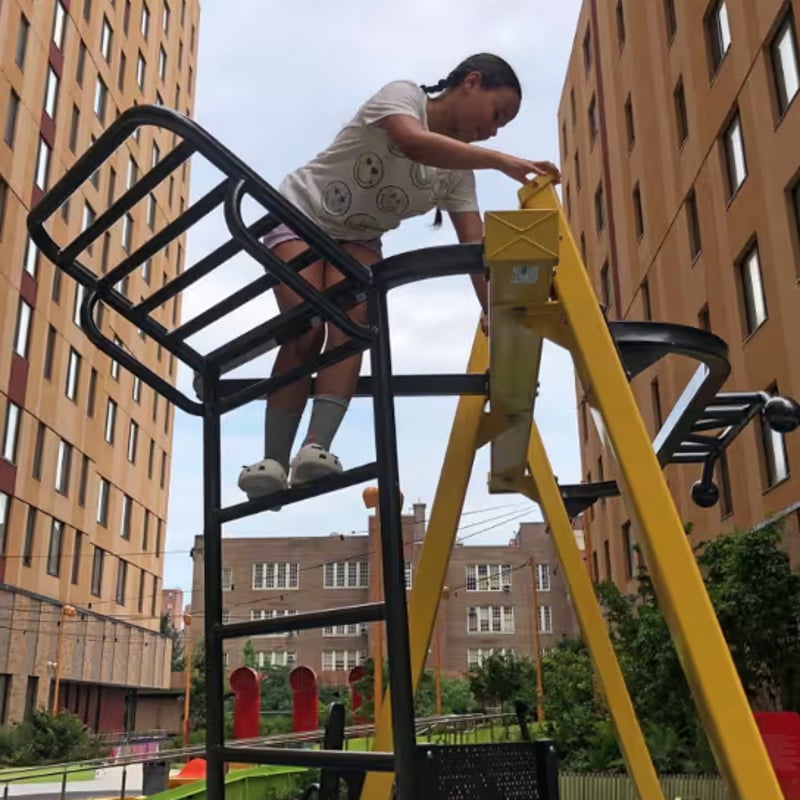THE EDIT
Your monthly briefing on the journey to fossil freedom
Issue #17, Agriculture, October 2024

Netherlands-based vertical farming company Growy offsets the high energy demand of LED lights by using solar panels on its facility's roof. Photo: Growy
How vertical farming is turning traditional agriculture on its head
What to know: Growing crops in stacked shelves under LED lights is reshaping traditional agriculture. Vertical farming enables precise control of growing conditions, significantly reduces land use, reduces water consumption and eliminates the need for pesticides. By integrating solar panels and wind power, energy use is also minimised, making it an even more sustainable solution.
Why it matters: With food security challenges on the rise and environmental pressures mounting, vertical farming offers a sustainable way to produce fresh food locally. By reducing reliance on imports, cutting emissions from transport, and ensuring consistent yields in harsh climates, it could play a crucial role in feeding the world while conserving resources.
Fossil-free fertilisers: A key to cutting carbon emissions
Fertilisers help feed the world but at a heavy environmental cost, with food production responsible for around 12 per cent of global greenhouse gas emissions. One of the biggest culprits is ammonia, a key ingredient in fertilisers, which when made from fossil gas releases two tonnes of CO₂ for every tonne produced. The solution? Pure water. With fossil-free electricity and hydrogen, “green ammonia” can be produced, eliminating emissions.

Much of the Tützpatz site is designated for poultry farming, with space for up to 15,000 chickens. Image: AI-generated/Adobe Stock
Charged momentum

Ten hours – that is how long the new generation of electric tractors can operate on small to mid-sized farms between charges. These electrified machines, equipped with advanced technologies, offer revolutionary benefits such as optimising resource use, increasing crop yields, and reducing waste. Electrifying 10 per cent of the global agricultural machinery fleet could reduce CO₂ emissions by 15–20 million tonnes annually.
Turning ocean harvests into tasty treats

Photo: Kattegatcentret
At Kattegatcentret aquarium in Denmark, children are turning seaweed and mussels, like those grown in Vattenfall's offshore wind farm at Kriegers Flak, into tasty dishes. The initiative encourages young chefs to explore ocean ingredients, transforming them into new family favourites.
News flash
3 x quick updates from the energy world

The Green Apple
The Sendero Verde apartment complex in East Harlem not only helps with New York’s housing crisis, it also uses only half the energy of comparable non-passive houses in the city. (theguardian.com)

Fighting farts with seaweed
Farts and burps from cows account for five per cent of global greenhouse gas emissions. Tech company Volta Greentech is trying to reduce this by adding seaweed to animal feed. Investors are over the moooooo-n. (voltagreentech.com)

What’s the scenario?
Climate modelling rarely explains how climate change will actually affect us. However, new research from the EDHEC-Risk Climate Institute could change all that and provide actionable answers. (theconversation.com)
And finally …
Holy solar power
Pope Francis wants to play his part in the green transition, writes Euronews.com. In an apostolic letter issued 'motu proprio', on his own initiative, released earlier this summer, His Holiness revealed plans to install solar panels on a Vatican-owned property outside Rome. The system will combine renewable electricity production with the needs of the underlying agricultural land, and the power generated could supply all the area's energy needs.

The Green Apple
The Sendero Verde apartment complex in East Harlem not only helps with New York’s housing crisis, it also uses only half the energy of comparable non-passive houses in the city. (theguardian.com)
Fighting farts with seaweed
Farts and burps from cows account for five per cent of global greenhouse gas emissions. Tech company Volta Greentech is trying to reduce this by adding seaweed to animal feed. Investors are over the moooooo-n. (voltagreentech.com)


What’s the scenario?
Climate modelling rarely explains how climate change will actually affect us. However, new research from the EDHEC-Risk Climate Institute could change all that and provide actionable answers. (theconversation.com)

